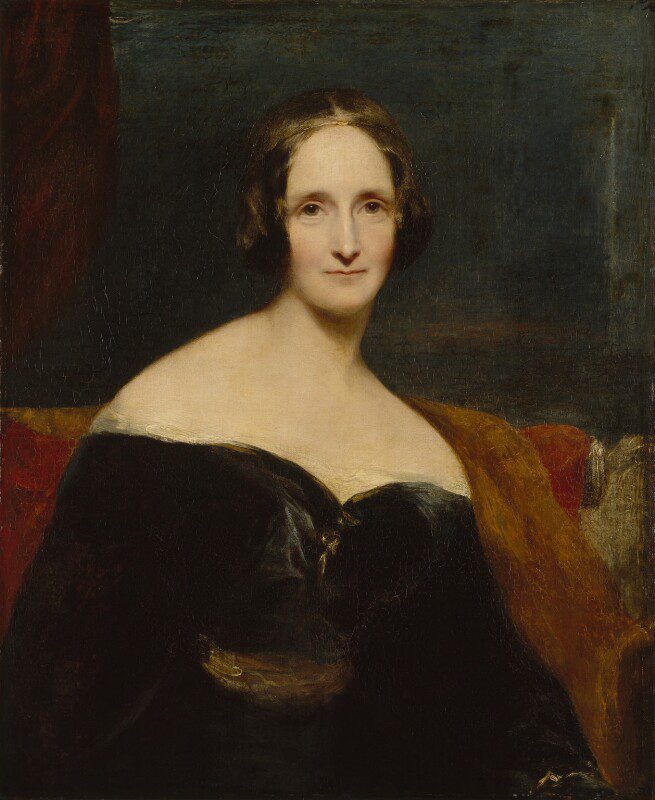Ceres Alhelí Otero Peniche
Mexico City, Mexico

Mary Shelley by Richard Rothwell. Oil on canvas, c. 1831–1840. National Portrait Gallery, London, NPG 1235. CC BY-NC-ND 3.0.
The authors of great literary works allow their readers to enter into the very precincts of their imaginations, leading them to the most fantastical places they could have ever imagined. Sadly, however, the authors who create these magical works are just as prone to suffer from the same terrible illnesses as other human beings. One such person was Mary Shelley, the talented novelist who, in 1818, won a ghost story competition by creating the renowned romantic and gothic novel Frankenstein. Her work describes the adventures and feats of Dr. Victor Frankenstein and of the horrific creature he created by performing an unconventional scientific experiment.
Mary Shelley began to experience severe headaches in 1839. These headaches were persistent, varying in location and length and frequently recurring. They were accompanied by dizziness and pain in the hands, legs, and eyes, sometimes triggering convulsive seizures. In 1842 she was diagnosed with psychosomatic illness—“disarrangement of the nerves”—and back pain. In 1846 she was diagnosed as having “neuralgia of the heart.” She underwent surgery in 1847 to relieve the pain and pressure on her spinal nerves, but the procedure left her barely able to move and in much pain.
By November 1849, her symptoms were worse, especially her head pain. Her speech became impaired, and she could hardly move. The following year, she was paralyzed and had convulsions. She died on February 1, 1851, at age fifty-three. No autopsy was done, but the cause of death was given as tumor of the left cerebral hemisphere, an unlikely diagnosis in view of the long duration of her symptoms.
It is now thought more likely that she suffered from hemiplegic migraine, an illness that was unknown at the time of her death. It is now understood to be an uncommon migraine subtype that may cause recurrent strokes, leading to brain damage, cerebral atrophy, cognitive decline, and death. It may be linked to CACNA1A gene mutations, which encode the alpha-1A subunit of the P/Q-type calcium channel. It runs in families, which may have been the case with Mary Shelley. During life, her ambition was to captivate her audience with her monster tale, but for several years, she was also battling her own monster: hemiplegic migraine.
References
- British Library. “Mary Shelley.” Accessed December 14, 2022. https://bl.uk/people/mary-shelley.
- Charlier, Philippe, et al. “Hemiplegic Migraine and Stroke in Mary Shelley.” The Lancet Neurology April 1, 2018. https://thelancet.com/journals/laneur/article/PIIS1474-4422(18)30082-6/abstract.
- Kumar, Anil, et al. “Hemiplegic Migraine.” StatPearls Publishing, January 1, 2022. https://pubmed.ncbi.nlm.nih.gov/30020674/.
- Knowles, Rachel. “Frankenstein’s Author, Mary Shelley (1797-1851).” Regency History, November 13, 2011. https://regencyhistory.net/2011/11/mary-shelley-1797-1851.html.
- Gallassi, Francesco, et al. “Mary Shelley’s migraine and fatal stroke: some observations on their primary cause.” Acta Biomed 2022;93:305.
CERES ALHELÍ OTERO PENICHE is a first-year medical school student at Tecnológico de Monterrey in Mexico City. She possesses a lifelong passion for writing and wants to share her ideas with the world. She is interested in studying plastic surgery, medical genetics, or general surgery for her academic focus. She enjoys spending her spare time reading, painting, and visiting museums.
Submitted for the 2022–23 Medical Student Essay Contest and Highlighted Vignette Volume 15, Issue 2 – Spring 2023

Leave a Reply